Reading response 2 In Search of the Ghostly in Context Ma Yin Lam Minnie
“In Search of the Ghostly in Context” is a book chapter in the monography “Fruit Chan’s Made in Hong Kong” written by a late local scholar Esther Cheung, who conducted a sophisticated analysis of the surreal characteristics of this low-budget movie in terms of their formations and purposes. Apart from public housing development, she also demonstrated the influences of socioeconomic context in cinema production. I was highly impressed by the argument of Cheung “Made in Hong Kong in fact contains a number of shots depicting the housing estates as prison houses”; I would like to further explore it.
This argument connected with the insight I inspired in lesson 6: “The architecture is the imagination itself.” Cheung described why Chan reimagined public housing in this way——foregrounding the vile living environment and revealing social inequality. Also, Cheung discussed how his imagination of housing as a prison was shown in various cinematic languages, for example, the “inside-out” technique for showing the urbanization of Sha Tin from the railing (Royal Park Hotel and high-rise private housing) through Moon’s point-of-view shot. This evoked a sense of captivity, expressing Moon’s desire for upper mobility.
However, Cheung didn’t explain thoroughly what allowed such imagination to take place——in the slab housing itself, it was the public housing where the male protagonist Moon lived. Photo 1 displays a similar form of compartmentalization between slab housing and Victoria Prison’s exterior through “Outside-in”; it is the first jail in Hong Kong (Purcell Miller Tritton, 2008). Moreover, photo 2 illustrates their design are alike: two flats arranged on two sides of the dim corridor with an end of grid pattern window. Thirdly, photo 3 showed both of their floor plans are rectangular; each flat contains metal gates (Photo 4). The structural similarities shared by slab housing and the jail catalyzed Chan to imagine housing as a prison, revealing the interconnections between class and public housing: those who are lower-middle classes are imprisoned there, especially teenagers. They understood that they had to leave public housing if they wanted to improve their social mobility or socioeconomic status; Meanwhile, they were unable to leave due to generational poverty and society was unlikely to help because they were being “forgotten” under urbanism.
Reference list:
Appendix:
Photo 1:


Photo 1: The form of Moon’s slab house and Victoria Prison after revitalization.
The upper photo captures half of the Moon’s slab housing from the film and the below one is Victoria Prison. Despite revitalization, the government kept the exterior appearance of it. In lesson 6, we talked about contrast is common in the “outside-in” technique in viewing housing in movies. However, in my case, it is about similarity. Figure 1 shows the compartmentalization they contained similarly in terms of the form. As the first jail in Hong Kong, its architectural design is influential in following jail construction.
Photo 2:
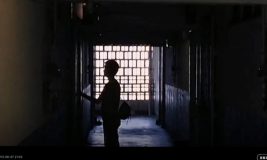
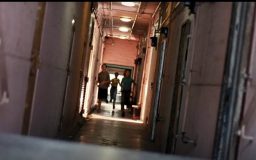
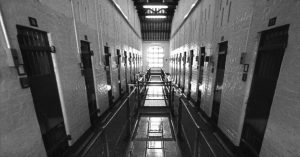
Photo 2: Let’s pay attention to their grid-pattern window at the end and their similar positions of two flats on two sides.
Same with photo 1, the upper two photos are captured from the film while the below photo is taken from the reference which explained the interior design of one of the blocks in Victoria Prison.
Photo 3:


Photo 3: The floor plan of Moon’s slab housing and Victoria Prison.
The upper one is Moon’s slab housing I have taken from the course material lesson 6, while the below one is also captured from the reference. Although they may not exactly have the same floor plan, they contain a rectangular shape. Ans such shape in Moon’s slab housing becomes an incredibly rich field of imagination for Fruit Chan.
Photo 4:
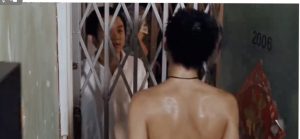
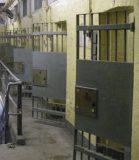
Photo 4: The metal gates of Moon’s slab house and Victoria Prison.
Even though their patterns are not the same, their material are. The development of slab housing itself has already included imagination, allowing Fruit Chan to connect to the prison.